California Undersea Imagery Archive
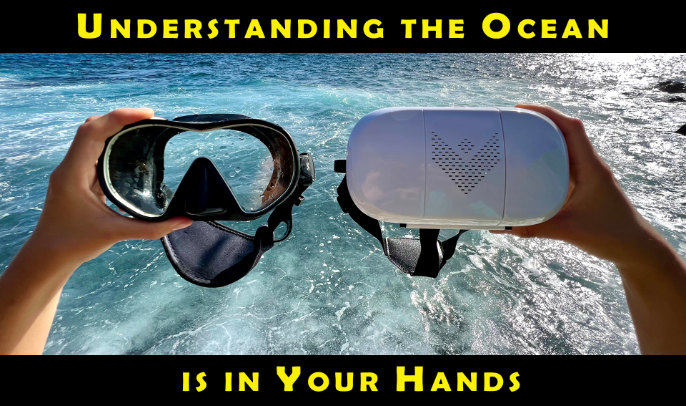
It is an irony of the 21st century that the ocean on which so much of human society depends (including for climate moderation, food safety, and recreation) remains fundamentally inaccessible to many communities. This disconnect is perhaps no more pronounced than in secondary schools in underserved communities, where students often have no direct experience with the sea and its ecosystems, even when that sea may only be miles away. Virtual reality has the potential to ‘immerse’ students underwater like never before, providing critical exposure, but also providing a compelling introduction to how science is conducted in an often-challenging environment which can in turn lead to enhanced engagement with the ocean and ocean conservation.
Immersive VR SCUBA Dive Curriculum
Our efforts to ‘render the water column transparent,’ to bring stakeholders, policy makers, and members of the broader public underwater with us through the use of imagery, has grown over the past few years. Advances in immersive virtual reality (VR) technology are now making it possible for high school students to explore what ocean researchers have always had the privilege of experiencing, not only with respect to the wonders of the undersea world, but importantly how scientific research is conducted underwater, and how it can be used to inform policy and management in support of marine conservation.
Virtual Reality tools remove the “try to imagine…” factor, by welcoming students into a different world regardless of where they live, how little experience they may have, or even whether or not they can swim. The connection from understanding that underwater world to caring for it is an easy leap, but one that must be stewarded with robust training in the scientific method.
What can students do with the VR SCUBA 360 curriculum?
Explore.
- Identify marine fish species and habitat(s)
- Develop an awareness of a research diver’s perspective
- Collaborate as research scientists
- Collect and analyze data from a specific Marine Protected Area
- Construct a Claim, Evidence, and Reasoning Statement
With the VR SCUBA 360 curriculum, your classroom becomes the ocean and your students are marine scientists. Through the use of virtual reality headsets and smartphones, students collect real world data along an underwater transect. Concepts such as biodiversity, keystone species, and trophic interactions come to life and create engagement in the classroom. Students team up to identify ecosystem elements, record data, and draw meaningful conclusions about the marine environment along virtual transects.
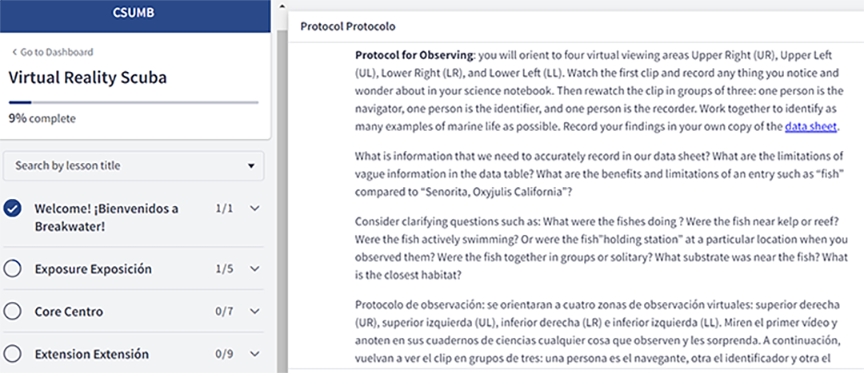
Sample of the curriculum

Watch a 360° underwater video here
Curriculum application possibilities
Going beyond the lesson plans, the data collected by classrooms using VR SCUBA 360 has real world applications. With a standardized format, the information can contribute to coastal monitoring programs, help manage MPAs, and inform local policy. Show your students the many opportunities in the field of marine science: from field research diver, to statistician, to ocean policy, the skills learned with this curriculum will help inspire the next generation of ocean scientists.
Levels. Languages. Locations.
The VR SCUBA 360 curriculum prioritizes creating a diverse, accessible, and engaging learning environment. It is a multi-level, bilingual curriculum that prioritizes low-cost learning materials. The material is also intended to align with the Next Generation Science Standards (NGSS) and the Environmental Principle and Concept (EP&C).
The curriculum is offered in the following structure:
- Levels: Exposure (Exposición)- a distilled version of the base curriculum intended to be accessible for those with little knowledge of marine systems; Core (Centro)-the base curriculum; Extension (Extensión)- includes some of the more advanced/in-depth opportunities in areas of quantitative reasoning and collective action.
- Languages: English, Spanish, and English-learning where users can see both English and Spanish but are prompted to answer in English.
- Locations: Currently, the VR SCUBA 360 content has been collected at multiple locations in California (our pilot study area), along with Tenerife in the Canary Islands, and is actively being used in classrooms in these places!
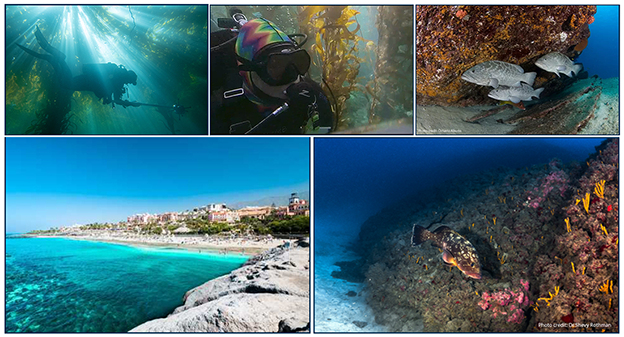
Marine habitats where video transects were collected

Monterey Bay - North Monastery Beach
Channel Islands - Santa Cruz Island
Cuba, Gardens of the Queen - Cabezo de Cubera
Subtropical Rocky Reefs, Mexico (delayed)
Rosh Hanikra-Akhziv Sea Reserve, Israel (in progress)
Tenerife, Spain
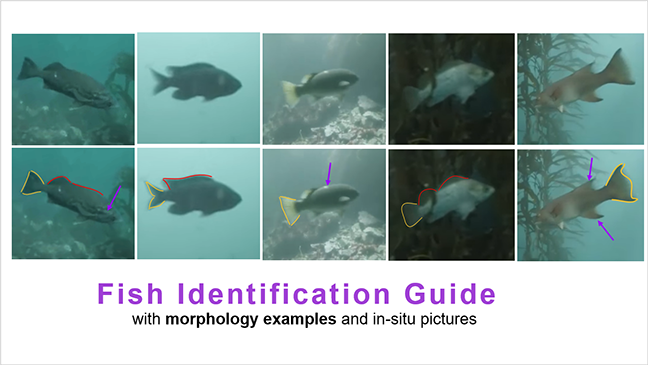
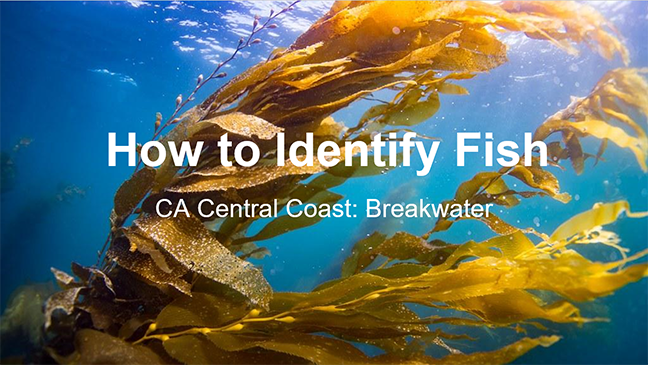
For access to the full curriculum content, please contact:
Dr. James Lindholm, jlindholm@csumb.edu
Dr. Corin Slown, cslown@csumb.edu
Carrie Bretz, cbretz@csumb.edu